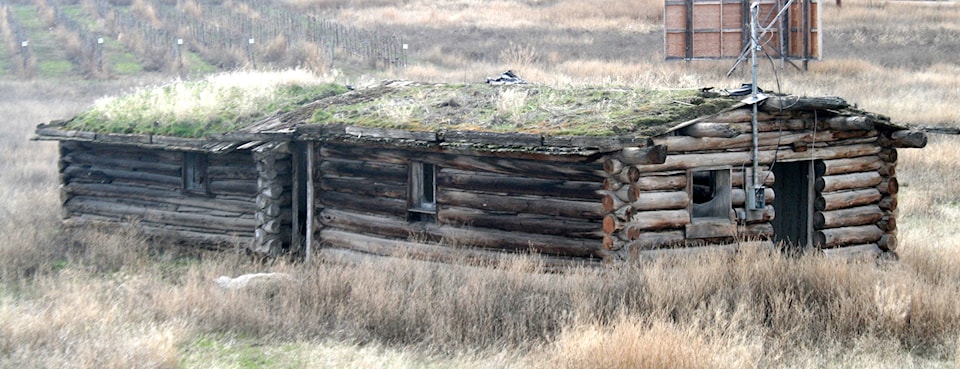Time is running out if Summerland wants to save one of the oldest buildings in the Okanagan.
The sod-roofed cabin in Trout Creek, according to its description in the federal registry of historic places, was built somewhere between 1886 and 1888 for cattlemen on the Tom Ellis ranch.
There is some controversy about whether cabin was possibly built by Ellis himself.
Over the years, the sod-roofed cabin has been home to a number of important historical figures, including Alberta’s first lieutenant-governor, Lt. Gov. George H.V. Bulyea, Claude Evans and Jacques Landry, Herbert Dunham, pioneer orchardist and the James Gartrell family, Summerland’s longest resident pioneer family.
But after 130 years, the cabin may be reaching the end of its life, unless something is done to preserve it.
“I am not sure it is going to survive another winter with the elements, sitting out in the open,” said Dorothy Inglis.
“There are a few of us, just trying to get it protected somehow. It is on private property, so the district can do nothing.”
Inglis would like to see the cabin moved to a spot where it can be preserved and used as a tourist site, showing how people lived in the 1890s.
“The municipality has said they will provide a spot for it as a heritage building if they can get ownership of it,” said Inglis.
She sent letters to the two companies and four individuals listed on the land title, but hasn’t had a response.
“It would be great if the owners donated it, and I am sure we could even come up with grants or local fundraising … if they wanted to sell it but I don’t know what the answer is, they won’t even engage with us,” said Inglis.
“We asked for a meeting with them, asked if they would at least let us know what their plans are.”
Last November, the heritage advisory commission was allowed to go on to the property and inspect it, bringing in an expert to assess the structure.
“He said, at that time, that he thought it was in better shape than he had seen from the highway,” said Inglis.
The cabin could be taken apart log by log and reconstructed elsewhere, or it could be moved in a couple of pieces on a flatbed, she explained.
“The inside is eight walls, there are two sections with kind of a breezeway in between the two pieces,” said Inglis.
“Some parts there have what I’ve been told is the original whitewash on the walls.”
One of the Inglis said would be to move it to Trout Creek Park where it could be fenced in and stand as a tourist attraction, possibly a picnic site.
Steve Kidd
Senior reporter, Penticton Western News
Email me or message me on Facebook
Follow us on Facebook | Twitter | Instagram
